#angiospermae
Explore tagged Tumblr posts
Text
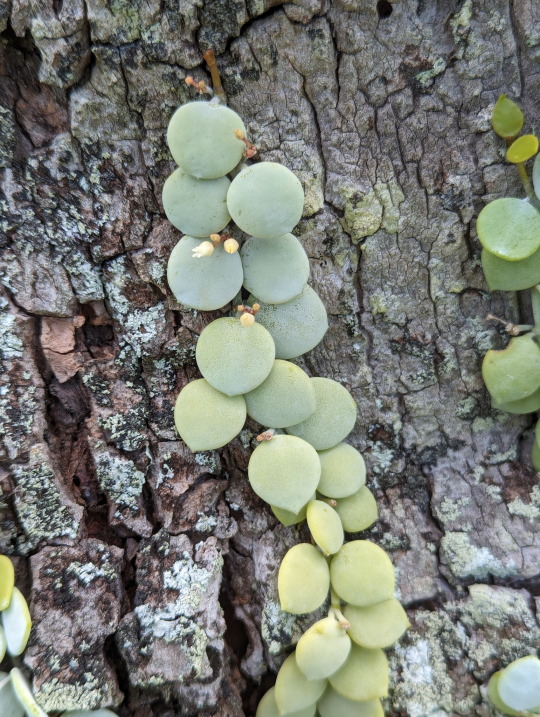
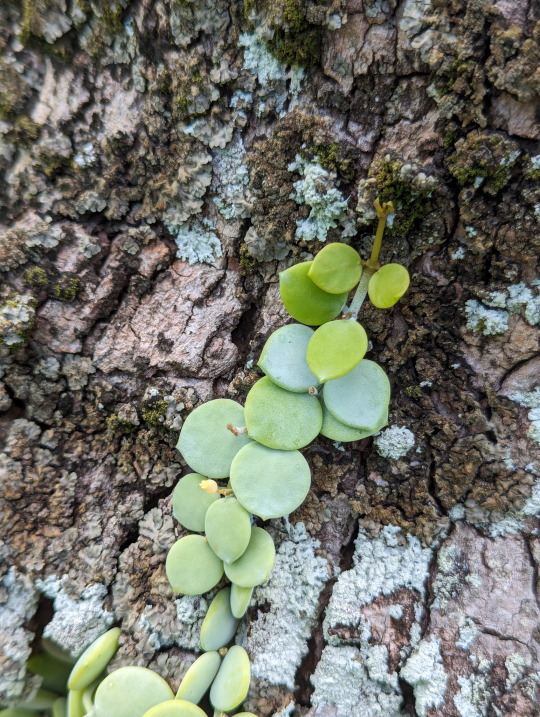
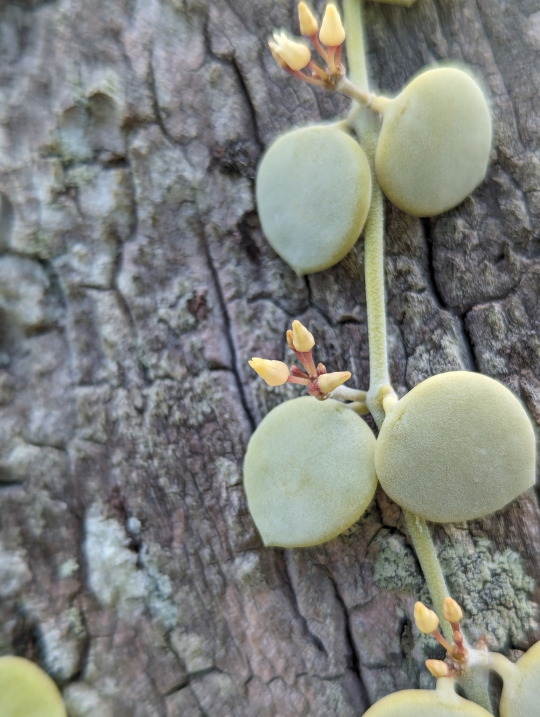

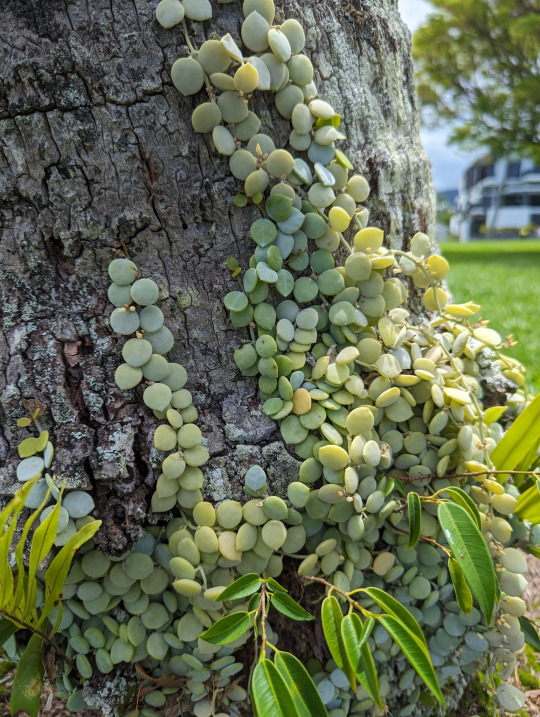
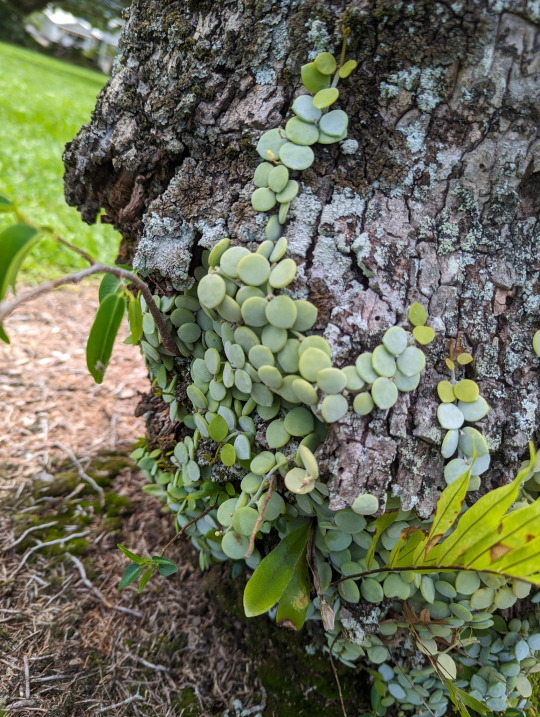
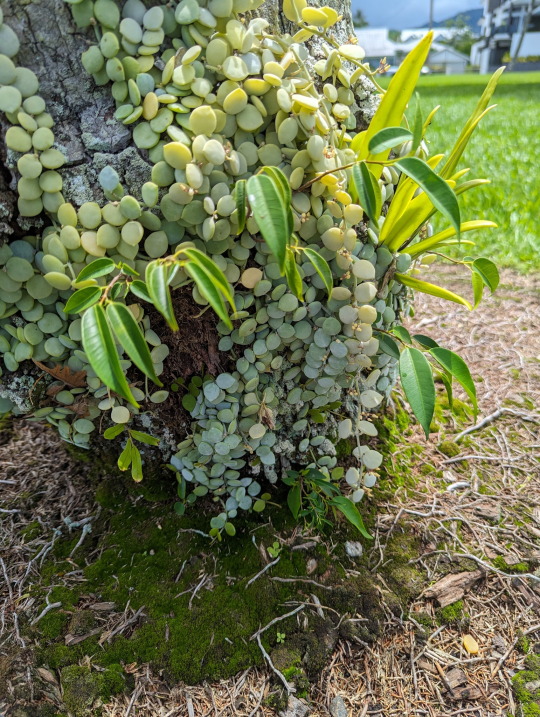

Beautiful button orchid growing on a palm tree.
17/01/24 - Dischidia nummularia
QLD:WET - Cairns
#nature#Dischidia nummularia#Button Orchid#Plantae#plants#botany#Milkweeds#Gentianales#Magnoliopsida#Dicots#Angiospermae#Flowering Plants#angiosperms#Tracheophyta#Vascular Plants
165 notes
·
View notes
Text
Well. This is complicating things unecessarily.
The only one with rhizomes that are supposed to look like this according to this identification key, is Arundinaria gigantea, Rivercane. But that one's not supposed to have so many lines below the new branches.
And just from these it could be Arundinaria appalachiana, except that we're way outside the expected range. And these ones keep their leaves all winter, when Hill Cane doesn't.
So.
Okay.

[ID: Two photos of different parts of an Arundinaria bamboo plant, captioned, "Excuse me". The first photo shows a cross section of the rhizome: it is pale yellow-green, with a small hollow center, and a thin shell around the edge. The surface is lightly pitted, but otherwise seems solid. The second photo shows a section with multiple branches. The main section where the branches form is dark reddish purple, with tan lines of where it hasn't grown in yet below, with four lines total. The older stem below this is dark green. End ID.]
#sigh#Arundinaria#Rivercane#Rjalker trains its gardening skill#plantae#tracheophyta#angiospermae#liliopsida#poales#poaceae#bambusoideae#arundinarieae
3 notes
·
View notes
Text
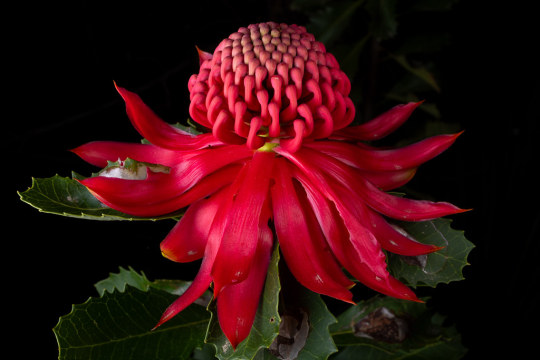
#IFTTT#Flickr#waratah#telopeaspeciosissima#telopea#speciosissima#plantae#tracheophyta#angiospermae#magnoliopsida#proteales#proteaceae#grevilleoideae#embothrieae#embothriinae#sydney#newsouthwales#australia#flower#native#nature#canon#macro#night#flash#jonodashper#jonathondashper#naturephotography#plant
10 notes
·
View notes
Text
I just looked something up… these guys diverged before earth had FLOWERS
NEW FISH JUST DROPPED
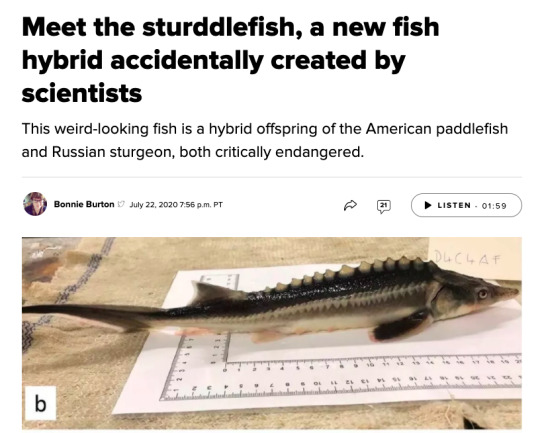
142K notes
·
View notes
Text
As opposed to the notion of the general populace, who reside under the assumption that I am sane, I am actually fucking depressed.
#not diagnosed but#do you expect me#to go to my INDIAN parents and tell them “mama papa I think i have depression”#do you WANT me to die#my sweet mama thinks i have no energy and laze around in my room all day because i need to eat more#(i eat enough - 3.5 meals a day + fruit + occasional snack)#guys i love fruit btw#but the orange i had today was an insult to angiospermae#anyway its not coz of the foid its coz maybe im mentally fucking ill bro#tw : depression#yapping the days away#venting the days away
4 notes
·
View notes
Text
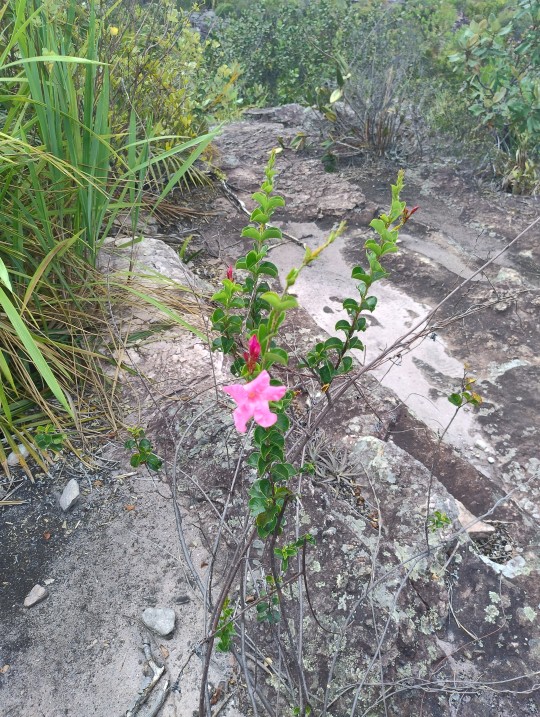
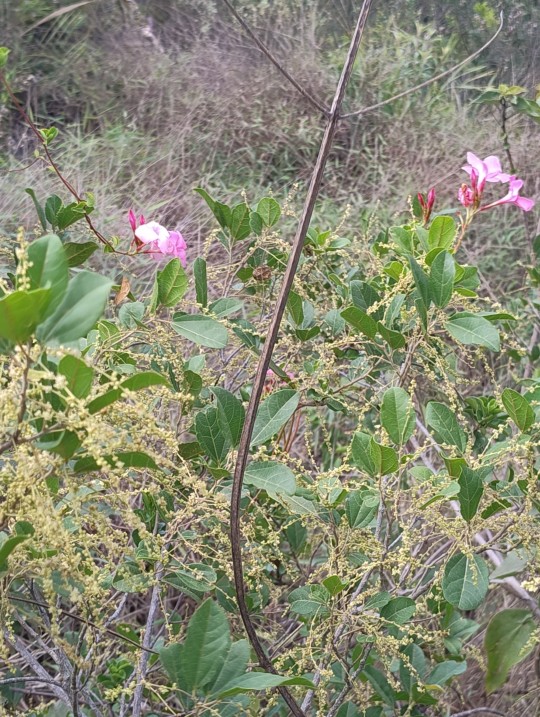
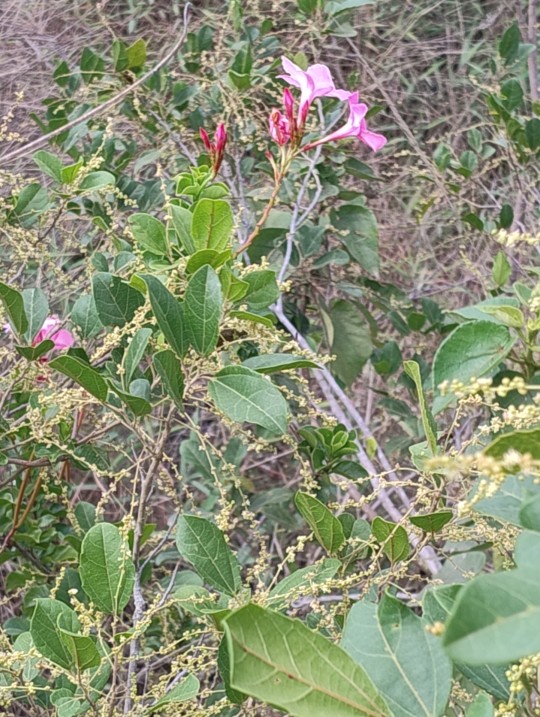
Mandevilla Bahiensis - Jasmin Brasileiro
by Violeta Oliveira
3 notes
·
View notes
Text
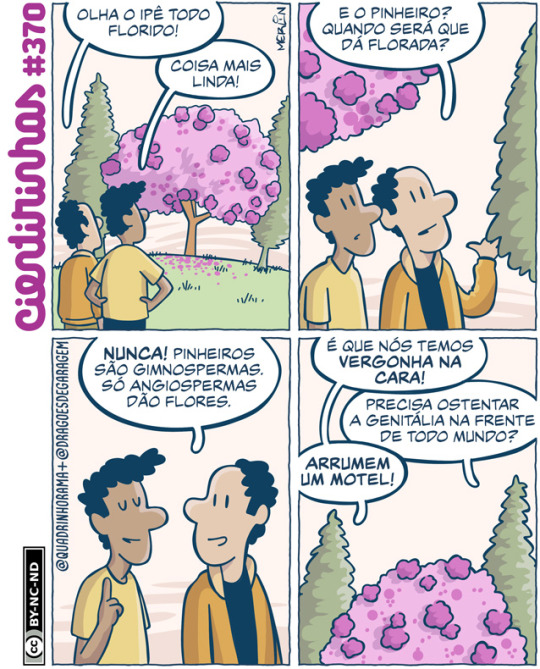
#370#sociedade#biologia#ipe#ipê#ipes#ipês#gimnospermas#gimnosperma#angiosperma#angiospermas#flo#flor#flores#florada#floradas
3 notes
·
View notes
Text
𝐁𝐚𝐫𝐛𝐞 𝐝𝐢 𝐛𝐨𝐬𝐜𝐨 ツ
Le 𝐁𝐚𝐫𝐛𝐞 𝐝𝐢 𝐛𝐨𝐬𝐜𝐨 (Usnea) è un genere di licheni frutticosi grigiastri-verdastri, con crescita simile a piccoli arbusti spogli ancorati su cortecce o rami di alberi.

Il genere appartiene alla famiglia delle Parmeliaceae ed ha distribuzione cosmopolita.
Le specie del genere vengono comunemente chiamate barbe di bosco e ricordano il genere Evernia; sono anche simili a quelle appartenenti al genere Alectoria. La differenza risiede nella caratteristica elasticità dei talli di Usnea, mancante invece nel genere Alectoria.
L'Usnea ricorda, inoltre, una specie di angiosperma del genere Tillandsia, tanto che quest'ultima è stata chiamata Tillandsia usneoides; come altri licheni, l'Usnea è una simbiosi tra un fungo e un'alga.
Nel genere Usnea, il simbionte fungino appartiene alla divisione degli Ascomycota, mentre il simbionte algale alla divisione delle Chlorophyta.
Come tutti i licheni con tallo frutticoso, la morfologia delle specie di Usnea è simile a quella di un piccolo arbusto ancorato alla corteccia dell'albero ospite; al contrario di altri licheni con morfologia simile, le specie di questo genere hanno una corda elastica che decorre al centro del tallo, che si può osservare tirando delicatamente un filamento del tallo.
L'Usnea si riproduce per via vegetativa (frammentazione, asessuata); attraverso i soredi, o sessuale, oppure tramite ascogoni e spermatogoni.
In natura, il tasso di crescita dei licheni è lento, seppure in condizioni di laboratorio è stato possibile velocizzare la crescita di Usnea coltivata in loco.
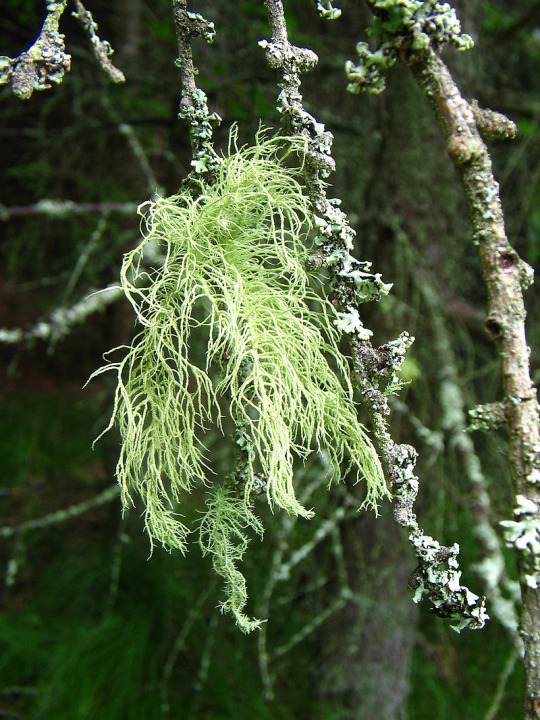
L'Usnea cresce spesso su alberi morenti o malati, dato che l'assenza delle foglie permette al lichene una maggiore capacità di fotosintesi; questo ha portato i giardinieri a credere che questi licheni siano la causa delle malattie che affliggono gli alberi ospite.
Le specie di Usnea sono particolarmente sensibili all'inquinamento atmoferico: in particolar modo all'anidride solforosa; in caso di cattive condizioni ambientali, possono crescere solo pochi millimetri, se riescono a sopravvivere. Dove l'aria non è inquinata, possono crescere sino a 10–20 cm.
La particolare sensibilità dell'Usnea all'inquinamento atmosferico la rende utilizzabile quale bioindicatore ambientale.
#𝐁𝐚𝐫𝐛𝐞 𝐝𝐢 𝐛𝐨𝐬𝐜𝐨#Usnea#licheni#frutticoso#Parmeliaceae#angiosperma#Tillandsia#Tillandsia usneoides#simbiosi tra un fungo e un'alga#simbionte fungino#Ascomycota#simbionte algale#Chlorophyta#tallo frutticoso#via vegetativa#soredi#ascogoni#spermatogoni#fotosintesi#sensibili all'inquinamento atmoferico#anidride solforosa#bioindicatore ambientale
3 notes
·
View notes
Text
Descobrindo Plantas Nativas
Descobrindo Plantas Nativas. Hoje, A Miconia Tococa ou Tococa Guianensis Aubl. Uma espécie frutífera que produz fruta pixirica azul. Descobrindo Plantas Nativas no Cerrado Brasileiro Olá, pessoas, aqui Odivan Velasco descobrindo plantas da floresta cerrado, fruta pixirica de cor azul, uma planta linda que você precisa conhecer e vai se encantar, eu garanto. O que sei de certo e atestado é que,…
#Angiospermas#angiosperms#clidemia mariana rubra#Descobrindo Plantas Nativas#família Melastomataceae#Miconia tococa#plantas lindas#plantas lindas para jardins#plantas nativas do cerrado para jardim#totoca guianensis
0 notes
Text
Diferencias entre Gimnospermas y Angiospermas: ¡Descubre el Mundo de las Plantas
las gimnospermas y las angiospermas representan dos grupos distintos de plantas con características únicas. Mientras que las gimnospermas se destacan por sus semillas desnudas y su apariencia más primitiva, las angiospermas son el grupo más diverso y exitoso de plantas en el planeta. Al comprender estas diferencias, podemos apreciar mejor la increíble variedad y belleza del mundo vegetal que nos rodea.
Introducción Las plantas son seres vivos fascinantes que llenan nuestro mundo de belleza y vitalidad. Pero, ¿sabías que hay diferentes tipos de plantas? En este artículo, exploraremos las diferencias entre dos grupos principales: las gimnospermas y las angiospermas. ¡Prepárate para sumergirte en el asombroso mundo de la botánica! Angiospermas y Gimnospermas Fuente:…

View On WordPress
0 notes
Text
ANGIOSPERMAS
As angiospermas são um grupo de plantas que pertencem à divisão Magnoliophyta. Elas são conhecidas como plantas com flores, e são o maior grupo de plantas terrestres, com mais de 300.000 espécies descritas.
As angiospermas são caracterizadas pela presença de flores, que são estruturas reprodutivas especializadas. Elas possuem órgãos sexuais, como estames (que produzem o pólen) e carpelos (que contêm os óvulos), que permitem a reprodução sexuada. Após a fertilização, ocorre a formação do fruto, que protege e dispersa as sementes.
Além das flores, as angiospermas possuem outras características distintivas. Elas possuem raízes, caules e folhas, que desempenham funções vitais para a planta. As raízes são responsáveis pela absorção de água e nutrientes do solo, além de fornecerem suporte para a planta. Os caules suportam as folhas e as flores, além de transportarem água e nutrientes entre as diferentes partes da planta.
As folhas das angiospermas são geralmente planas e possuem uma estrutura chamada de estômato, que controla a troca de gases com o ambiente. Elas são responsáveis pela realização da fotossíntese, processo pelo qual as plantas produzem seu próprio alimento.
As angiospermas são encontradas em uma ampla variedade de habitats, desde florestas tropicais até desertos e tundras. Elas são essenciais para o equilíbrio dos ecossistemas, fornecendo alimento e abrigo para uma variedade de seres vivos, além de desempenharem um papel crucial na produção de oxigênio e na regulação do ciclo da água.
Evolucionariamente, as angiospermas surgiram há cerca de 140 milhões de anos e rapidamente se diversificaram e se espalharam pelo planeta. Atualmente, elas são fundamentais para a economia global, sendo fonte de alimentos, fibras, madeira, medicamentos e ornamentos.
Em resumo, as angiospermas são um grupo diverso de plantas com flores, que desempenham um papel vital nos ecossistemas e na vida humana. Elas são caracterizadas pela presença de flores, frutos, raízes, caules e folhas, e são essenciais para a sustentabilidade do planeta.
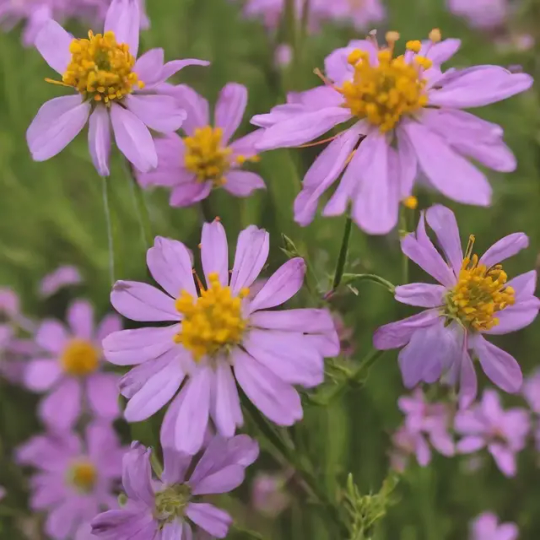
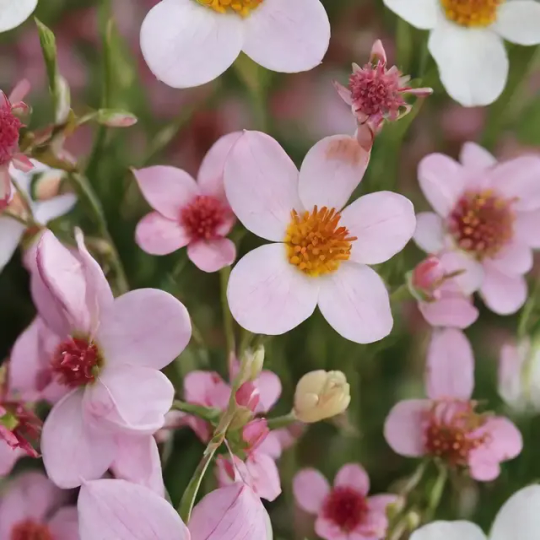
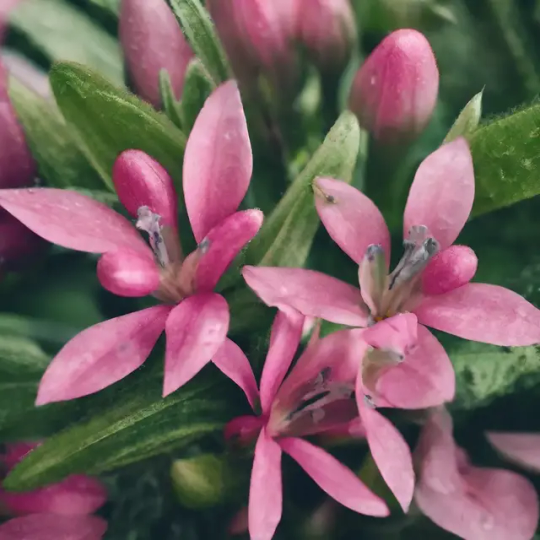
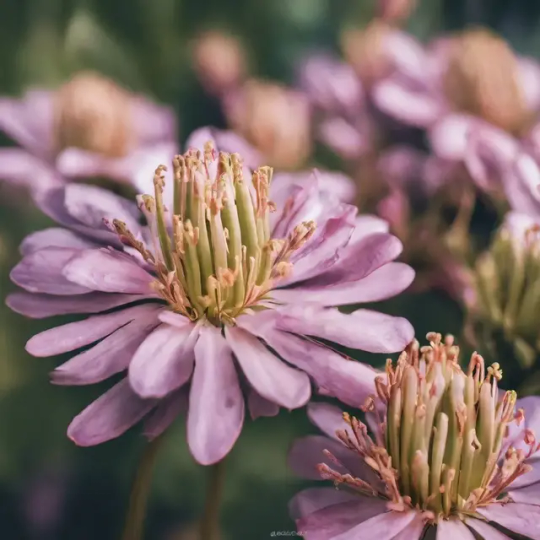
1 note
·
View note
Text

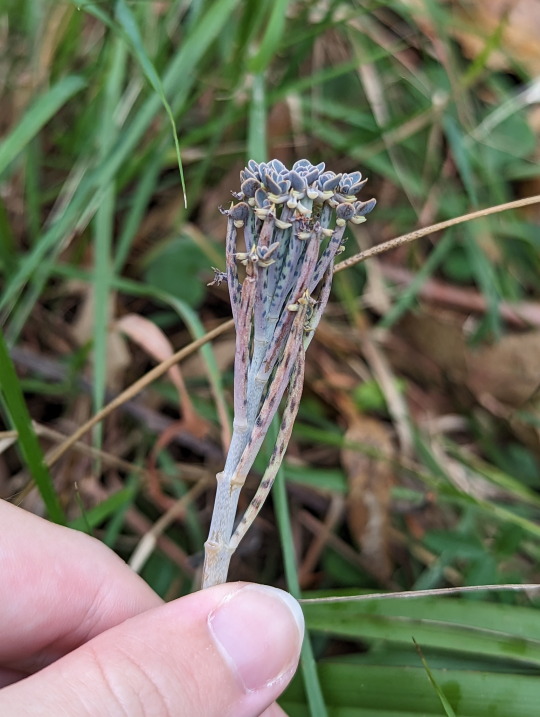
Mother-of-Millions
Kalanchoe delagoensis
20/03/23 - NSW
#Kalanchoe delagoensis#Mother-of-Millions#Kalanchoe#Kalanchoes#Crassulaceae#stonecrops#Magnoliopsida#Dicots#Angiospermae#angiosperms#Flowering Plants#flowers#Tracheophyta#Vascular Plants#Plantae#Plants#botany
352 notes
·
View notes
Text
Abgerny character design in my AU, Vocals category [Final]




Extra

Alright, after a long hiatus, I finally drew the last section that everyone has been waiting for, "Vocals"! This is the last part where I reveal the designs of all the Abgerny characters in my AU. After that, I started writing their bios in my AU through Vurr's perspective, describing how she feels about each of them and her experiences spending time with them directly. (In my AU, Vurr has interacted with all the Abgerny characters, resulting in the VR world, all of them have clothes because it reflects Vurr's memories directly.)
As you can see, most of the Vocals have a tan skin tone, which is noticeably different from the other characters who have light skin. The reason? I just wanted to change it because too many Abgerny characters I designed have light skin and I'm tired of seeing that skin tone. Also, tan skin isn't bad for Juan and Benson, and Bearrito and Juana actually fit them well in my opinion since that skin tone is quite common among Hispanic and Latino people. (If you don't like it, that's up to you because I will never change their skin color in my AU anyway lol.)
Why are there two Juans? And who is the one named "Juana"? For those who follow my work on Reddit and Twitter, you probably already know the reason why I draw two Juans in my AU. But for those who don't know, let me explain briefly. (For those who already know and are too lazy to read it again, you can scroll down to read the topic about the origin of the scientific name and classification for Rainbow Flower in my AU.)
The reason I draw two Juans is simple: "I thought Juan was a "guy" because of her masculine name and appearance. And I created this AU long before the latest Abgerny update that confirmed Juan was a "girl" in Horror Mode. Also, I used he/him pronouns for Juan throughout the story and portrayed Juan as a "man" for over 10 chapters with no hint of being a "girl" whatsoever. So it's hard to go back and fix it. To cut the problem in my style, I decided to add "Juana" which represents Juan's canon gender but as Juan's older twin sister instead so that some of you guys won't feel uncomfortable too much from seeing Juan being portrayed as a man instead of a woman in my AU." (Juana is Juan's female counterpart in Spanish.)
So if you're talking about Juan in my AU, you have to specify which Juan it is because if you only specify "Juan", I'll only think of my male version of Juan. If you want a female or canon Juan, you have to specify like "Juana" or "Juan (canon)" because I like it that way. (I know this may sound annoying to some because Juan's canon gender is "female" and not male, but this is my AU and the story and character designs are my own creation (I'm not claiming that these Abgerny characters are mine, I'm just trying to say that the design in my AU are "mine" tho). If you don't like these little rules that I created in my AU, that's fine because I'm not forcing you to like them. Just respect my decision and rules, and don't harassed me for some stupid reason like this.)
Okay, the next question is where the scientific name of Rainbow Flower comes from. Let me explain it thoroughly.
Scientific Name for Rainbow Flower "Florigenius chromatica".
Breakdown of the name:
"Florigenius" → A fusion of Flora (Latin for flower) and Ingenius (Latin for intelligent/genius), representing its sentience.
"Chromatica" → Derived from Chroma (Greek for color), emphasizing its rainbow-colored petals and abilities.
So, "Florigenius chromatica" means "Brilliant, Colorful Flower".
More information about its classification.
Kingdom: Plantae (Plants – because it's still fundamentally a flowering plant)
Phylum: Angiospermae (Flowering plants – since it has petals and reproductive structures)
Class: Eudicots (Most flowering plants with broad leaves, like sunflowers and roses)
Order: Asterales (Includes daisies, sunflowers, and other composite flowers—Rainbow Flower has a similar petal structure)
Family: Florigeniaceae (A new, fictional plant family for genetically modified, sentient flora.)
Genus: Florigenius (Combining “Flora” and “Genius” to represent intelligence and plant traits.)
Species: Florigenius chromatica (Meaning "brilliant, colorful flower")
Trivia:
Kingdom, Phylum, Class, and Order follow real plant taxonomy.
Family "Florigeniaceae" is fictional, representing artificial or engineered plants.
Genus "Florigenius" separates it from normal flowers due to its sentience.
Species "chromatica" highlights its rainbow-colored petals and abilities.
This is the part that took me the most time while drawing Vocals, because I was researching botany and connecting scientific facts to each other until my brain was about to explode. And most importantly, it wasn't that important to the story but I still took it too seriously. I think I'll become a botanist by now, damn it. I'm going crazy with my life. (╥﹏╥)
Okay, enough of the science headaches, let's get to the questions about Benson and Bearrito.
You're probably wondering why Bearrito is so... umm, radical in my AU? The answer is that I changed Bearrito's personality a little bit, in that Bearrito is a little bit psychotic and has a "twisted sense of humor". So even though Bearrito is a good joker, there are times when his jokes are so twisted that it makes many people feel uncomfortable when listening to them. Most of them are violent towards the offenders (because he also has a twisted sense of justice). For example, he would say that peeling off the skin of a drug dealer and sticking it on the wall in the prison to surprise the drug dealer would be very "funny" because they would exclaim the forbidden words in fear and it would offend the prisoners of that nationality and get beaten up.
In addition, Bearrito was born from Benson's defense mechanism that Benson experienced when he was a child (Dissociative identity disorder (DID) go brrr-). So Bearrito would be like Benson's guardian who always tried to make Benson happy with his jokes and protected him from danger, even though his protection went too far and made Benson feel very uncomfortable, especially when he used Benson's own body to commit cruel acts while Benson could only watch from the inside of his mind. (But they are still close, just Benson strongly distrust Bearrito when Bearrito offers to "help" him on something because Bearrito always causes trouble whenever Bearrito takes over Benson's body.)
And lastly, about William
Why is William's name called "W.I.L.L.I.A.M."? Well, that's just an abbreviation for William AI in my AU (he's an AI in my AU, and he also have true form too. But I won't revealed his design as that was the most important part in the story). As for William AI's full name? That's a secret and I won't give you any hints lol. Guess for yourself (which I doubt you'll get right because it's a long and hard name to guess). Who's sitting in the chair in front of William? That's William's creator, that's all you need to know for now, I won't tell you their name lol
But for those who are interested in seeing William's full body on screen... see below.

(Based on reindeer that change their fur color to white during the winter.)
I know some people will wonder why William's design in VR world in my AU is different from William's design in VR worlds that are more commonly seen in Abgerny fandom like this.

First of all, this design is "not the canon design of William in VR mode". Anyone who played the original Abgerny will know that this design does not appear in the game at all, only the Wendigo version of William appears. So, William's VR design can be any design you want him to be, and I prefer something I design myself. Feel free to use William's VR design in my AU for other entertainment purposes, just make sure to give me credit as the creator of his design.
Okay, that's all for today. See you guys later in the bio of Abgerny's character for my AU!
28 notes
·
View notes
Text

#IFTTT#Flickr#genoplesiumdensum#genoplesium#densum#sydney#nsw#australia#plantae#plant#tracheophyta#vascular#angiospermae#flowering#liliopsida#monocot#asparagales#orchidaceae#orchid#orchidoideae#orchidoid#diurideae#prasophyllinae#midge#orchids#flower#nature#2024#wildlifephotography#naturephotography
2 notes
·
View notes
Text
Alright Tumblr weirdos and autistics, assemble! I have need of you!
I need to write a short seminar about some kind of plant, and I have net zero inspiration, so I'm outsourcing it. Tell me the FREAKIEST, most We-Sure-This-Isn't-an-Alien? plant you know of, (or why a relatively common plant should belong in this category), sources very much appreciated, and if it makes me go 'The Fuck Is This Shit?' that will be the theme of my seminar.
An unfortunate caveat: This is for my Applied Botany class, so the subject plant is supposed to be Angiospermae (aka, has flowers), but the prof is chill enough that I can swing it as long as it can be classified as Embryophyta (aka, land plants).
Other than that, anything goes. Help me make this man tell horror stories about me in retirement!
121 notes
·
View notes
Text

Since Flavedo is finished and uploaded....
Here is a little teaser art for the next Dead Dove fic.
Definition of Angiospermae : Any of a class (Angiospermae) of vascular plants that have male and female reproductive structures enclosed in a flower, that have seeds which arise from ovules contained in the ovaries, and that produce dry or fleshy fruits after double fertilization
#dead dove#earl of lemongrab#whump#whump community#lemongrab#adventure time#dead dove do not eat#livestockbird#a03 fanfic#adventure time fanart#adventure time fanart lemongrab#earldom of lemongrab#lemongrab fanart#a03 fanfic writer#a03 fic#whumpfic#whump fic#whumpblr#whump tropes#whump blog#whumpee#whump 2025
7 notes
·
View notes